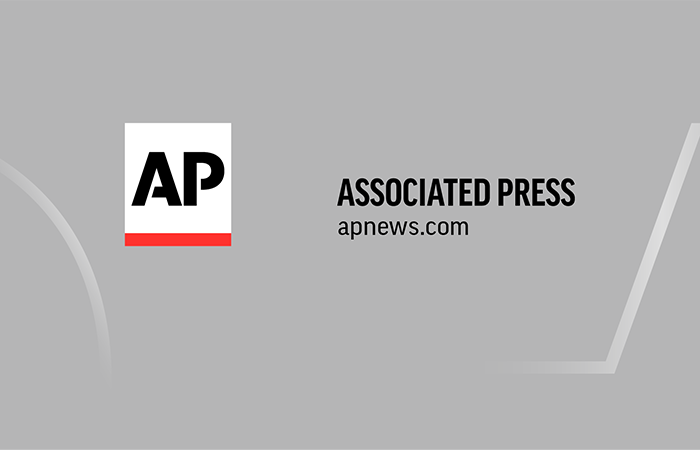The Battle for Public Broadcasting: Trump’s Executive Order Sparks Outrage
May 3, 2025, 5:46 pm

Location: United States, District of Columbia, Washington
Employees: 51-200
Founded date: 1967

Location: United States, Illinois, Springfield
Employees: 501-1000
Founded date: 1970
Total raised: $3M

Location: United States, District of Columbia, Washington
Employees: 1001-5000
Founded date: 1942
In a move that has sent shockwaves through the media landscape, former President Trump has signed an executive order aimed at slashing federal funding for public broadcasting entities like PBS and NPR. This is not just a budget cut; it’s a direct assault on the very fabric of public media. The Corporation for Public Broadcasting (CPB), which oversees funding for these services, has already filed a lawsuit against Trump, claiming he has overstepped his authority. The stakes are high, and the implications are profound.
Public broadcasting is a lifeline for many local stations. These stations rely heavily on federal funding, donations, and grants. In smaller markets, they are often the only source of local news and cultural programming. Cutting this funding could silence voices that matter most to communities. It’s like pulling the plug on a heart monitor; the consequences could be dire.
Trump’s actions are not unprecedented. Republican leaders have often targeted public broadcasting, but this time feels different. The current threat looms larger than ever. The CPB’s lawsuit highlights a critical point: the president’s attempt to fire three of the five board members is not just a power play; it’s a calculated move to undermine the board’s ability to function. Without a quorum, the board cannot make decisions. It’s a strategic strike aimed at crippling public broadcasting from within.
The timing of this executive order is telling. Just weeks ago, the White House announced plans to ask Congress to rescind CPB funding as part of a sweeping $9.1 billion budget cut. This package is expected to be the first of many. The administration’s intent is clear: to dismantle institutions that it perceives as adversarial. Public broadcasting, with its commitment to independent journalism, stands at the forefront of this battle.
But the implications extend beyond PBS and NPR. Trump’s administration has been systematically targeting various cultural and educational institutions. The U.S. Agency for Global Media, which includes Voice of America and Radio Free Europe/Radio Liberty, is also under siege. These organizations are designed to promote independent news gathering in regions where press freedom is restricted. By dismantling these entities, the administration is sending a message: dissent will not be tolerated.
Federal courts have begun to push back against these actions. In several cases, judges have ruled that the administration may have overstepped its authority in withholding funds appropriated by Congress. This legal pushback is a glimmer of hope in a darkening landscape. It shows that the rule of law still holds weight, even in the face of executive overreach.
The implications of cutting funding to public broadcasting are far-reaching. Public media serves as a counterbalance to commercial news outlets, which often prioritize profit over public interest. Without public broadcasting, the media landscape would become even more homogenized. Diverse voices would be drowned out, and critical local stories would go untold. It’s a slippery slope toward a media environment where only the loudest voices are heard.
Public broadcasting is not just about news; it’s about culture, education, and community. It’s where children learn about the world through programs that educate and inspire. It’s where local artists find a platform to share their work. Cutting funding would be akin to closing the doors of a community center; it would rob people of a vital resource.
The fight for public broadcasting is a fight for democracy itself. In an age where misinformation spreads like wildfire, independent journalism is more crucial than ever. Public broadcasters provide a space for fact-based reporting and thoughtful discourse. They hold power accountable and give a voice to the voiceless. To undermine this system is to undermine the very principles of democracy.
As the lawsuit unfolds, the future of public broadcasting hangs in the balance. Will the courts uphold the integrity of the CPB, or will Trump’s executive order pave the way for a new era of media control? The outcome will not only affect PBS and NPR but will set a precedent for how public institutions are treated in the future.
Public broadcasting is a reflection of our society. It embodies our values, our stories, and our aspirations. The fight to protect it is a fight for the soul of our nation. As citizens, we must rally to defend these institutions. We must advocate for the funding that keeps them alive. The battle is not just about dollars and cents; it’s about preserving a space for truth, creativity, and community.
In the end, the struggle for public broadcasting is a microcosm of a larger battle for freedom of expression. It’s a reminder that we must remain vigilant. We must stand up against attempts to silence dissent and control narratives. The fight is far from over, and the outcome will shape the future of media in America. Let’s ensure that future is one where public broadcasting thrives, not just survives.
Public broadcasting is a lifeline for many local stations. These stations rely heavily on federal funding, donations, and grants. In smaller markets, they are often the only source of local news and cultural programming. Cutting this funding could silence voices that matter most to communities. It’s like pulling the plug on a heart monitor; the consequences could be dire.
Trump’s actions are not unprecedented. Republican leaders have often targeted public broadcasting, but this time feels different. The current threat looms larger than ever. The CPB’s lawsuit highlights a critical point: the president’s attempt to fire three of the five board members is not just a power play; it’s a calculated move to undermine the board’s ability to function. Without a quorum, the board cannot make decisions. It’s a strategic strike aimed at crippling public broadcasting from within.
The timing of this executive order is telling. Just weeks ago, the White House announced plans to ask Congress to rescind CPB funding as part of a sweeping $9.1 billion budget cut. This package is expected to be the first of many. The administration’s intent is clear: to dismantle institutions that it perceives as adversarial. Public broadcasting, with its commitment to independent journalism, stands at the forefront of this battle.
But the implications extend beyond PBS and NPR. Trump’s administration has been systematically targeting various cultural and educational institutions. The U.S. Agency for Global Media, which includes Voice of America and Radio Free Europe/Radio Liberty, is also under siege. These organizations are designed to promote independent news gathering in regions where press freedom is restricted. By dismantling these entities, the administration is sending a message: dissent will not be tolerated.
Federal courts have begun to push back against these actions. In several cases, judges have ruled that the administration may have overstepped its authority in withholding funds appropriated by Congress. This legal pushback is a glimmer of hope in a darkening landscape. It shows that the rule of law still holds weight, even in the face of executive overreach.
The implications of cutting funding to public broadcasting are far-reaching. Public media serves as a counterbalance to commercial news outlets, which often prioritize profit over public interest. Without public broadcasting, the media landscape would become even more homogenized. Diverse voices would be drowned out, and critical local stories would go untold. It’s a slippery slope toward a media environment where only the loudest voices are heard.
Public broadcasting is not just about news; it’s about culture, education, and community. It’s where children learn about the world through programs that educate and inspire. It’s where local artists find a platform to share their work. Cutting funding would be akin to closing the doors of a community center; it would rob people of a vital resource.
The fight for public broadcasting is a fight for democracy itself. In an age where misinformation spreads like wildfire, independent journalism is more crucial than ever. Public broadcasters provide a space for fact-based reporting and thoughtful discourse. They hold power accountable and give a voice to the voiceless. To undermine this system is to undermine the very principles of democracy.
As the lawsuit unfolds, the future of public broadcasting hangs in the balance. Will the courts uphold the integrity of the CPB, or will Trump’s executive order pave the way for a new era of media control? The outcome will not only affect PBS and NPR but will set a precedent for how public institutions are treated in the future.
Public broadcasting is a reflection of our society. It embodies our values, our stories, and our aspirations. The fight to protect it is a fight for the soul of our nation. As citizens, we must rally to defend these institutions. We must advocate for the funding that keeps them alive. The battle is not just about dollars and cents; it’s about preserving a space for truth, creativity, and community.
In the end, the struggle for public broadcasting is a microcosm of a larger battle for freedom of expression. It’s a reminder that we must remain vigilant. We must stand up against attempts to silence dissent and control narratives. The fight is far from over, and the outcome will shape the future of media in America. Let’s ensure that future is one where public broadcasting thrives, not just survives.
